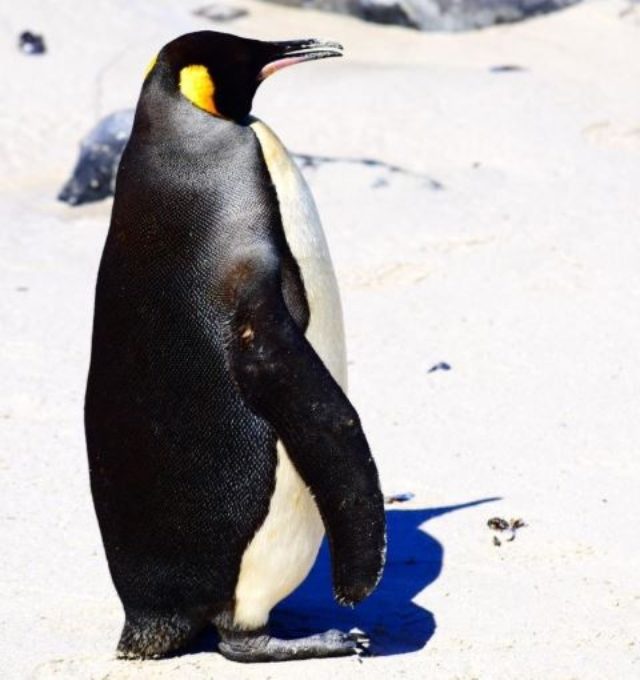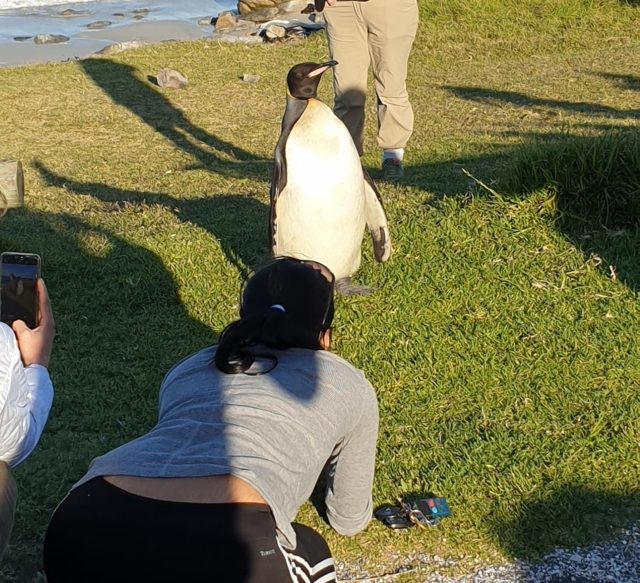Yesterday, an email popped into my inbox from the SA Rare Bird News group, or SARBN for short.
The subject line read 'MEGA ALERT', so you knew it was something juicy, but this really is a massive sighting for all the twitchers out there.
Proof of said email, before we carry on:
Mega alert is correct.
The penguins you see around the Western Cape, at places like Boulders, are African penguins (formerly known as jackass penguins), but this king penguin has travelled a fair distance before ending up at Cape Point's Buffels Bay.
One likely starting point for that journey would be the king penguin colony on South Georgia Island, "which is 4,784 km from Cape Town as the penguin swims".
More from TimesLIVE:
South African National Parks said on Twitter: "This has gained a tremendous amount of interest from birders across the country. We urge the public to keep their distance from the penguin as his activity will be monitored over the next few days."There is a chance that the penguin may have been transported on a vessel, and then dumped overboard when the boat returned to Cape Town, but I think we should give the bird some credit.
The male bird is in excellent condition, according to Nicky Stander, rehabilitation manager at the Southern African Foundation for the Conservation of Coastal Birds (SANCCOB).
She said it had been examined through a zoom lens by a vet and a government environmental official. "The bird has some old scars but nothing requiring our attention," said Stander.
For now it will be left to its own devices on the beach. "We won't move an animal if there's no necessity," she said.
Stander said the vet had seen signs of fish oil on the penguin, which meant it had been feeding.
Here's a video of the world's second-largest penguin species, which can grow to be around a metre tall, and can weigh in at anywhere between nine and 17 kilograms:
View this post on Instagram
The king penguin (Aptenodytes patagonicus) is the second largest species of penguin. They are mostly found around the Sub-Antarctic, so this dude is far from home! They weigh up to 17 kg and can reach a height of 100 cm! These cool little dudes feed on small fish, squid or crustaceans and have been know to dive up to 300 m deep when hunting! Once a young penguin leaves the colony, they are unlikely to return for at least three years when it is ready to mate. Mating season for these birds is usually between September and November when they return to the beaches from their hunting grounds. They normally spend about 3 weeks on the beach with their mate and then they head back out to the hunting grounds. It's during this mating period that moulting also takes place. The pair (in this case, one lonesome little dude) would then stay on the beach with their egg, taking turns carrying it on their feet, keeping it warm and eventually care for the chick in a similar manner. Currently their population is estimated at about 4 million and these cool little tuxedoed guys can live up to 30 years old in the wild. This guy seemed quite warm but didn't look too stressed out, and the rangers had everything and everyone under control. Let's hope he or she, because these guys are sexually dimorphic, gets back to the rest of the colony safely. 🐧 PS. Today is the day I start saving for a DSLR, my videos/photos have not done this penguin justice. Keen to see your footage @jasonboswell 🤙🏼
A post shared by Roxy Zunckel (@roxyzunk94_) on
For a point of reference, the African penguin weighs between 2,2 and 3,5 kilograms, standing between 60 and 70 centimetres tall.
The largest penguin species of all, the emperor penguin, can reach 1,3 metres and weigh up to 23 kilograms.
Those who went to see the penguin were treated to a spectacle, with the bird showing no fear.
We can't embed this video, posted to the #ImStaying Facebook group, but it shows just how unafraid the penguin was as it waddled towards those present on the beach:






Love the penguin.
I have just now decided to Row to Antarctica! I'll link a 'go fund me' page later.
R.C.
Jesting.
RC